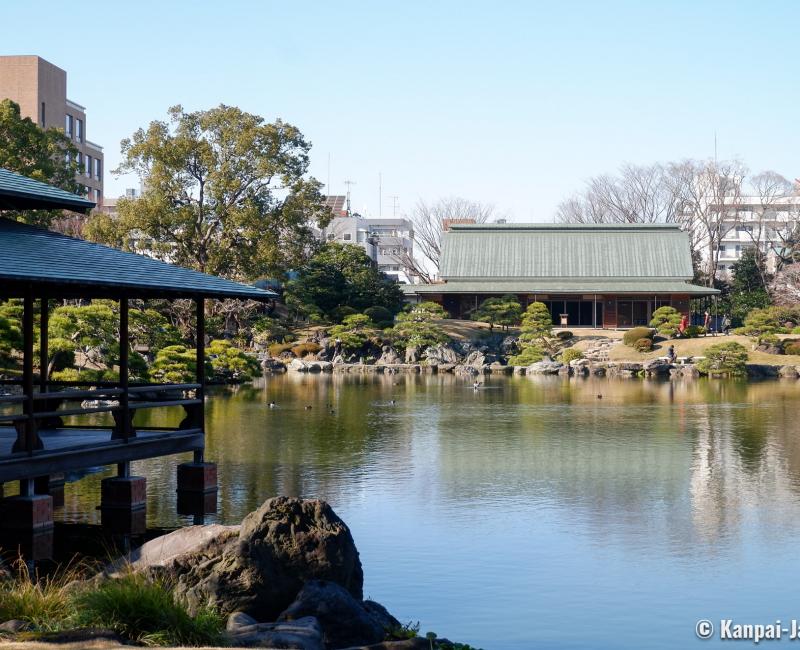Kiyosumi Teien
The Stroll Garden in the East of Tokyo
Kiyosumi Teien is a Japanese garden located in Kiyosumi-Shirakawa district, in Koto ward opening on Tokyo Bay. This exceptional site was traditionally arranged around a main pond and stones gathered from throughout Japan were placed to create a promenade in this large green space.
Kiyosumi Teien was primarily a private residence, before it was bequeathed to Tokyo Municipality in 1932 and was the property of several owners since its creation during the Edo period (1603 - 1868). First a wealthy merchant, then a feudal lord and lastly the industrialist Iwasaki Yataro (1835 - 1885), founder of the Mitsubishi group, all participated in the shaping of the present days’ landscape at Kiyosumi Teien.
The garden was miraculously preserved from the great disasters of the first half of the 20th century: the Great Kanto Earthquake in 1923, then WWII bombings in 1945, and was used as a refuge area by the inhabitants.
Nowadays, visitors enjoy the large superficies of this green oasis that spreads on roughly 80 hectares. Thanks to its eastern location off the heart of the capital, the park enjoys a quietness favorable to the contemplation of miniaturized landscapes typical of Japan, that constitute this classical garden.

A piece of green haven in the city
Unnoticeable from the street, Kiyosumi Teien unveils only after passing its entrance, that leads immediately to the main part of the garden: the large Sensui pond around which one walks to enjoy the various viewpoints. Along winding earth trails, stone paths and little bridges, one discovers a dignified nature thanks to the permanent work of the gardeners.
The perfectly plucked pine trees, rooted on islets, and the small artificial hills with their flowery bushes create a harmonious scenery of a remarkable beauty. It feels really good to walk in this garden.
The traces of the city still remain in the background but are easily forgotten thanks to the plentiful wildlife living in this green paradise. The colored koi carps share the water with countless ducks and a few turtles, while birds are chirping nestled in the trees.
The tea pavilion Ryo-tei, overhanging the water, adds some charm to the place. It is pleasurable to see the reflection of this traditional architecture building surrounded by the vegetation in the pond, like a beautiful mirror.

A typically Japanese mineral composition
The particularity of Kiyosumi Teien lies in its mineral aspect, that was highly enhanced here and is integral part of the composition. The many rocks of elegant shapes that ornament the garden are due to its last private owner, Iwasaki Yataro. All the stones have their own name and come from various places around Japan, and were placed precisely in order to give a better structure to the pond.
To this extend, Kiyosumi Teien could be considered rather as a "stone garden," rather than a solely vegetal space. Mineral elements are everywhere, such as in the toro Japanese lanterns 🏮 and in a more original manner, the stone steps named Isowatari creating a walk above the water. A little bit further, a stele was engraved with a famous haiku by poet Matsuo Basho (1644 - 1694):
Furu ike ya,
Kawazu tobikomu,
Mizu no oto.
Which means:
An ancient pool,
A frog jumps in–
The sound of water.
This poem perfectly sums up the atmosphere of the place. People walk in Kiyosumi Teien’s alleys to refresh in the beauty of its traditional landscapes, unaltered for centuries. Aside the seasonal peaks of flower blooming (plum trees, rhododendrons, hydrangeas, and irises), the garden is not very crowded: only a few people come for stroll, to draw or take a picture of the most beautiful viewpoints.

